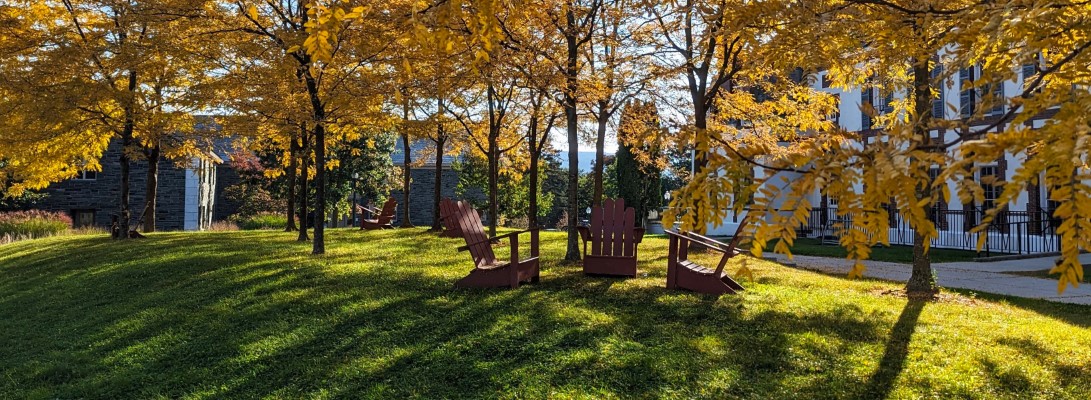I’ve been reading quite a bit this fall in various newspapers, web sites, etc. about the science of leaf change, and I thought, well, heck, there goes another blog post. I don’t see the sense to retread ground others are covering.
By now, you’ve probably read that leaf color changes by the shortening of day-length light triggers the tree to begin shutting down the leaves, and that chlorophyll breaks down, and sugar is absorbing into the tree. In a nutshell, the veins connecting the leaf to the tree are closed (abscission layer), and once this is complete the leaf falls.
Weather does play a part in leaf color, and in the color you see in the hills as you visit your children on parent’s weekend here (Hi parents! Your kids are doing fine. They want more money.) Many articles have talked about warm weather delaying fall, cool nights are good, drought bad. It’s easy to understand, though, if you think of it in terms of plant health.
A happy, healthy tree in a good growing season will more than likely have pretty spectacular colors. The factors responsible for bad fall color aren’t good for the tree health either. Drought is bad for fall color, and also bad for the trees. Southern Vermont this year had a pretty bad late summer drought, and when I was on route 4 a week or so ago near Woodstock the leaves were terrible, turning brown and falling off, rather than turning nice colors. Here at Middlebury it’s been a dry September, and then the recent rain storms came at just the right time, and the leaves held on long enough to turn well. Warm fall days and cool nights? Good for sugar production, and the breaking down of chlorophyll in the active leaf. A late spring or a severe summer drought can delay fall color-the tree holding on to it’s leaves as long as possible, storing as much energy as it can before winter.
Another leaf color fact plant geeks have probably noticed is called the Leaf Wave Model. An article at the University of Georgia discusses this: Peak color is an opinion. Different trees turn at different times, and in differing colors. Yellows dominate early, then oranges as both later trees turn, as well as some yellow leaves becoming more orange. Finally reds dominate the landscape, with accompanying orange. Browns come last, generally in oaks. The leaves in Vermont are spectacular because of the forest cover types found here, yellow Ash, orange and red maples, along with splashes of green from Pine and Spruce. By paying careful attention to the mountains in the fall you can watch this leaf color wave happen.
Some other reading I’ve been doing this fall was about the color red, something I’ve never thought about. An interesting question for botanists has been “Why red?”. As chlorophyll disappears from the leaf, the other colors emerge, such as yellows and oranges provided by Carotenoids. Red, though, is expressed through Anthocyanin, but is not found in a leaf, and must be produced. The question, therefore, becomes why would a plant be producing a compound, expending energy, at a time in it’s life cycle when it is trying to store and conserve? There are two schools of thought, and probably both are correct, some for some plants, some for others.
One theory is that anthocyanin is produced in trees in nitrogen poor soils. In some varieties of trees, as the green chlorophyll breaks down, the leaves are vulnerable to bright sunlight, and this sunlight breaks down the produced sugars, thereby not being absorbed back into the tree as energy storage. The red pigmentation acts like a barrier from the sunlight, allowing the tree to absorb more of the sugars it has produced. Nitrogen poor soils means the tree would have produced less sugars, being weaker growing, so more red pigmentation would conserve more of the valuable food.
The other theory is one of coevolution, that red leaves are a signal to insects as a repellent, a red warning signal to the insects attempting to use the tree as an overwintering site. A study has shown this in aphids and apple trees, that wild apple leaves turn red in the fall, and suffer less aphid predation.

One thought on “Leaf Color”